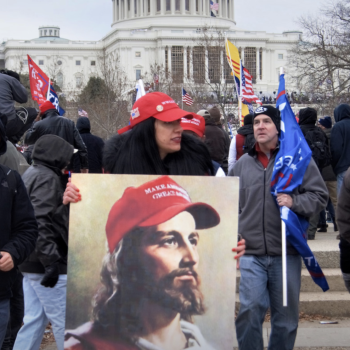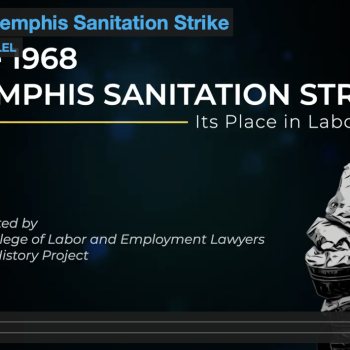I came of age in the church of the 80s and attended seminary mostly in the 90s. This means I sat through more than my fair share of interminable congregational meetings writing church mission statements, almost all of which had the word “grow” somewhere included.
These meetings were well-intentioned. Inspired by the development strategies of “successful” corporations, these predominately middle class churches were just doing what a lot of their parishioners were doing at work: rolling out five year strategies, setting productivity goals, measuring how they maximize profits.
The churches had a product they believe in, after all. Jesus, giver of life.
At the same time I was participating in these mission/vision processes, I was also rather steadily reading various forms of critical theory. I had early exposure to critiques of colonialism in college, read Edward Said’s Orientalism in seminary, attended to Ernst Käsemann’s concerns about the middle class captivity of the church, saw the development of our own denominations theology of accompaniment, and so in a variety of ways was trained to critique strategies for “church growth” even as I helped formulate mission statements expressing a desire to grow the church.
Then in the 2000s, early in my career as a pastor, together with so many North American Christians I had the odd pleasure of exposure to new movements in mission. Not church growth, but missional theology. The Emergent Church. Ancient-Future church. Etc.
I offer all this as some context for what I will share next. Yesterday, January 19th, our denomination formally launched the next phase of its Future Church design. The first phase was an affirmation by the ELCA Church Council of the design itself. Yesterday was supposed to have been a “conversation” with rostered leaders of our denomination.
However, the ELCA web site crashed during the start of the conference call, so instead three staff of the ELCA recorded a video broadcast outlining the Future Church design.
I took time yesterday to watch the video, and I tried to summarize it briefly in some notes. Here they are:
Presiding Bishop Eaton: Sorry about the technical glitch. Hi, this is the video. Now, on to our presenters…
Mikka McCracken: Innovation Lead
Marks of our current situation according to surveys: Loneliness; Hunger; Concern about polarization; General lack of optimism
Three Priorities:
1. A welcoming church engaging new, young and diverse people
2. A thriving church: rooted in tradition and radically relevant
3. A connected, sustainable church: raising the bar — together
She repeated a couple of times that we are telling the old old story in a new way (referred us to the ELCA Innovation Blog)
Phil Hirsch: Executive Director for Christian Community and Leadership
We want to do this together with you. We understand. It’s hard these days; How will we do this? We don’t really know. Some of you have some good ideas.; Basically we want to do what Luther did; No one has it figured out. But we have the desire to reach new people; We don’t want you to be alone in this.
One Big Shared Ministry Goals:
Engage with one million new people (example: 500th anniversary asked his church to make 500 invitations—use marbles to keep track)
What do you want preached at your funeral? We will help you make that happen. Brief mention that he pastored for 20 years and his churches grew modestly.
Back to Presiding Bishop Eaton (she’s giving us her description of the future church strategy):
This is an exciting vision into which God is calling us. We have discovered the real intimate love of Jesus. That’s the only reason to invite people into the life of the church.
We’re all working together, and it will change with the context, inspired by the Spirit and changed by God’s love. Really looking like the body of Christ, so more people can know this.
You won’t have to create this by yourself. And we can’t do this apart from you. You’ll be hearing more from us. We’ll get our technology issues sorted out.
Send us your ideas. Thank you for serving and being a part of this vision God has given us.
Prayer: Lord God, you are Lord of the airwaves and the microwaves… nothing can stop this message of Jesus. Thank you for these pastors and deacons, working during COVID and fighting racial injustice. Infuse them with your strength as they talk about the way of Jesus. Guide this church as we seek to be a beacon, a place of love, mercy, reconciliation, and justice, and God bless us all in these next days. Amen.
Now on to some analysis:
1. If you want the SUPER SHORT VERSION of Future Church, it is this: our shared goal is to engage with 1 million new people using marbles.
Okay, that’s not even tongue in cheek. If you watch the video, Phil Hirsch announces that our one shared goal is the 1 million engagement strategy. He goes on to say that although there will be many ways to do this, one church he knows used marbles during the 500th anniversary of the Reformation and asked parishioners to move a marble from one jar to another if they invited someone to a church event.
Now, I’m not critical of the marble strategy. I like marbles, and I like to invite people to church events. But setting the goal of reaching 1,000,000 million engagements seems to glide over a few key points. First, it takes little to no account of our shared history of colonialism. To be frank, it’s a colonial strategy. Second, there’s simply not much “there” there. Reach 1 million with what, exactly, and for why? To grow the church? To share Jesus? The problem is that the strategy itself kind of carries its own meaning, and in this case it appears our goal is to engage 1 million because we want to engage 1 million. We want to reverse decline. That’s the meaning.
2. Is it just me, or does everyone just seem tired?
One pastor tried to explain to me that this launch of Future Church is not technical change but adaptive change. It’s about starting a movement. But I’m honestly having trouble seeing it. The bishop and Phil both just seemed tired and worn out. Mikka McCracken had the most energy of the three (as well as the clearest and most substantive presentation… she is our Innovation Lead after all), but on almost any measure of adaptive change, this launch lacks it.
I get that these three are arguing for adaptive change so that together we as a church learn our way toward solutions. But if that were really the approach they were taking, why was the presentation and roll-out so lacking in the “learning together.”
It’s not very hard these days to create mediated space for distributed conversations. Zoom has break-out rooms and chat threads. Basically any “live” broadcast has a chat thread. Most of our churches have been using these platforms for nine months now. But even before the ELCA web site crashed, this roll-out of Future Church has completely lacked any true “learning together” component. It’s all quite pre-decided.
I think it is this way because our churchwide organization is tired, dysfunctional, perhaps even systemically toxic. As a result, the launch of a new initiative is like the Millennium Falcon attempting to jump to light speed with a broken hyperdrive. Except in our current situation nobody is on board who knows how to fix it.
3. Futuring itself is no longer what it used to be
We’re trying to develop a long-term design for innovation in our denomination at exactly the moment many big corporations and organizations are realizing such approaches are antiquated and less than helpful.
We would be far better off focused on what we will do over the next three or six months. What are we committed to as the ELCA for the last phase of this pandemic?
4. Why does so much religious language sound so vacuous?
I commend our bishop for keeping the focus on Jesus, and I appreciated Mikka McCracken’s tying of the priorities to Scripture, and yet I also feel often like the spiritual language is spiritualized. It ends up sound detached from this-worldly concerns. It sounds like preacher-talk. Anyway, don’t do it. There are many ways to not speak this way, illustrated for example by Jesus himself.
5. Is Luther really still our only historical example?
I mean like yeah the guy had half a dozen printing presses and was a publishing giant, but why do we only look back to Luther. We’ve had a few centuries in-between. In our “learning together” maybe there are other historical moments and persons to reference?
6. Green New Deal
How do we have an entire church design/strategy that makes no reference to climate change or a Green New Deal? How is that even a thing?
7. Anti-racism and reparations
How is it possible that our denominational leadership completely ignored the call, again, to commit to reparations?
8. Repudiating the Doctrine of Discovery
We repudiated the doctrine of discovery, but now our goal is to go reach people with the gospel? This lacks subtlety. It’s potentially dangerous. It’s likely traumatizing.
9. If we want a connected church, why isn’t the bishop of the ELCA in the clergy Facebook group?
I mean seriously, if these denominational leaders want connection, why aren’t they connecting? Where are they? Yesterday was very much an Oz behind the curtain kind of moment. We’re all out here and very connected. Where are you?
10. I sure do wish there would be a lot more of Bonhoeffer’s this-worldliness underpinning our strategy/design.
More taking hold of the real. More religionless Christianity. More integrity.
“I wish it need not have happened in my time,” said Frodo.
“So do I,” said Gandalf, “and so do all who live to see such times. But that is not for them to decide. All we have to decide is what to do with the time that is given us.”
Top recommendations for alternative priorities and BHAG (Big Hairy Audacious Goal):
1. Recognize, elevate, and celebrate the queer and BIPOC spiritual gifts in our church; end the bullshit of bound conscience
2. Repent of complicity in colonialism and racism, open the churches and denomination up to voluntary reciprocal exchange of resources and services for mutual benefit (mutual aid) with interfaith, ecumenical, and community partners, and commit to reparations, especially reparations related to the climate crisis
3. Now that we are a sanctuary denomination, prioritize this at every level in our “expressions”: practice actual sanctuary
BHAG: Dissolve ELCA churchwide offices and fully ecumenically integrate with one or more full communion partners, redeploying churchwide staff in ways that increase mutual aid among our interfaith partners; rename our organization the Ecumenical Lutheran Church in America












